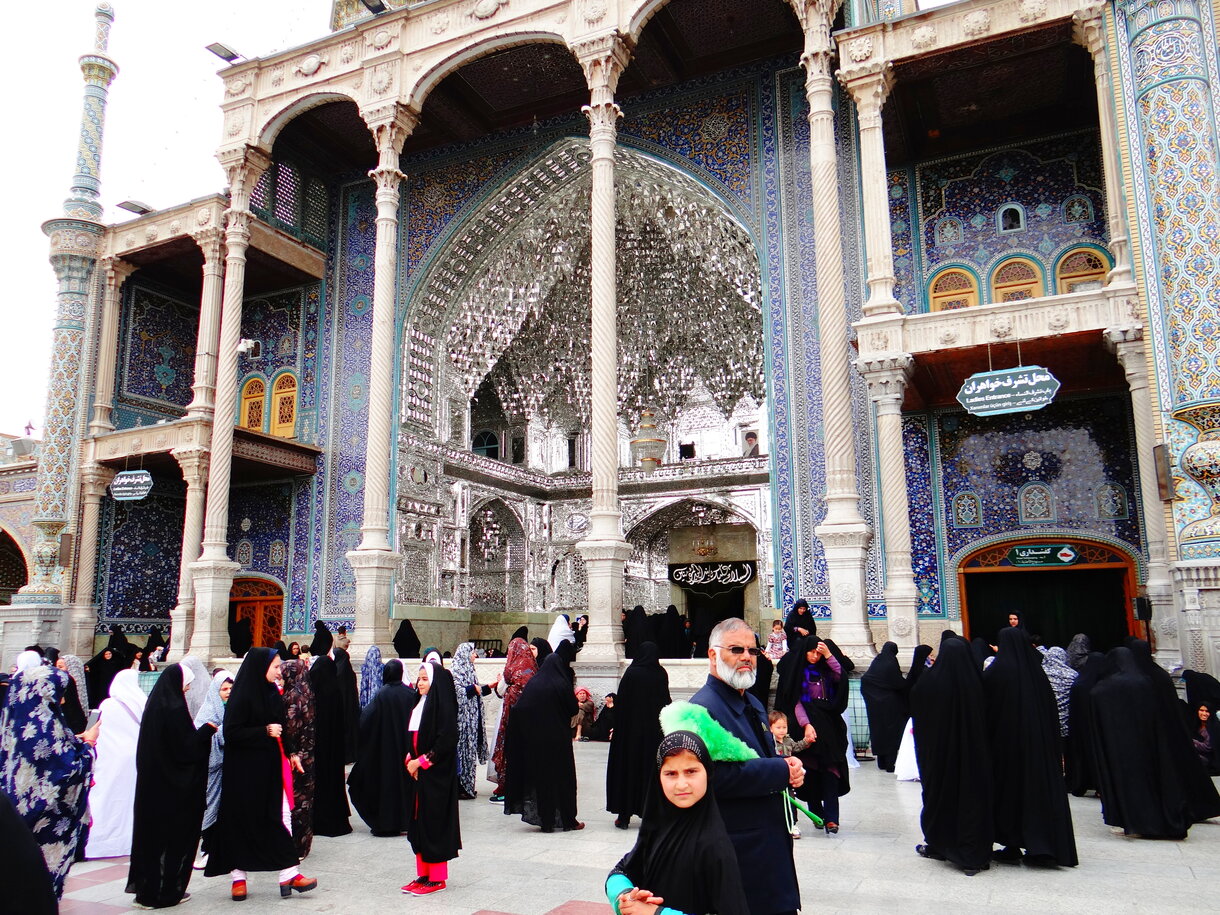Qom: The Spiritual Heart of Shia Islam
Just 140 km south of Tehran lies Qom – far more than a provincial town, this is Iran’s spiritual capital and one of Shia Islam’s holiest sites. Founded in the 8th century, its religious significance grew in 816 AD with the burial of Fatima al-Masumeh, sister of the eighth Imam Ali al-Ridha. Today it’s Iran’s second most important shrine after Mashhad, attracting millions of pilgrims annually.

Qom’s Religious and Political Significance
Qom isn’t just for pilgrims – it’s the intellectual center of Shia Islam. The city houses Iran’s most important seminary (hawza), training future ayatollahs. It was here in the 1960s that Ayatollah Ruhollah Khomeini began the movement that led to the 1979 Islamic Revolution. Today Qom remains a conservative stronghold – its streets filled with women in black chadors and robed clerics.
Did you know? Qom’s Jamkaran Mosque is where Shia tradition says the Hidden Imam (Mahdi) will reappear. Every Tuesday night, thousands gather here for special prayers.

How to Visit Qom
Half a day suffices to experience Qom’s unique atmosphere without being overwhelmed by its conservatism. The main attraction is undoubtedly the Fatima al-Masumeh shrine complex.
- From Tehran: Buses depart from South Terminal (Terminal-e Jonub), costing ~130,000 IRR (2022). The journey takes 1.5-2 hours.
- Arrival: Buses stop at a central roundabout. Taxis to the shrine cost 50,000-70,000 IRR.
- Visiting the Shrine: Separate entrances for men/women. Women receive free chadors (full-body coverings). Guides explain the site’s history and ensure visitors respect prayer areas.
- Highlights: Gold-plated domes, mirror mosaics courtyards, and (externally) Fatima’s tomb. Observe pilgrims’ emotional prayers respectfully.

Other Qom Attractions
- Khomeini’s House Museum – The modest home where the revolution’s leader began his movement. Free entry but solemn behavior required.
- Qom Bazaar – Smaller than Tehran’s but authentic. Buy famous Qom pistachios or “gaz” (Persian nougat).
- Malek Museum – Surprisingly rich collection of Islamic/pre-Islamic art, including rare manuscripts.
Practical Tips
- Dress Code: Iran’s most conservative city. Women must cover hair, wrists and ankles. Men should avoid shorts.
- Photography: Shoot architecture freely, but avoid photographing worshippers without consent.
- Timing: Visit mornings or late afternoons to avoid heat.
- Next Stop: Easy bus connections to Kashan (2 hours) – famous for beautiful Persian houses.
Qom offers a profound encounter with Iran’s spiritual core. While intense for Western visitors, it provides unforgettable insight into modern Iran’s religious identity.

Leave a Reply